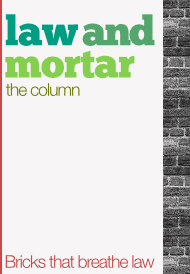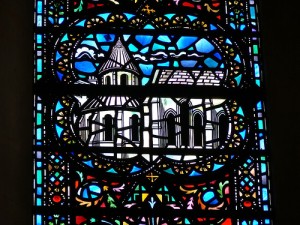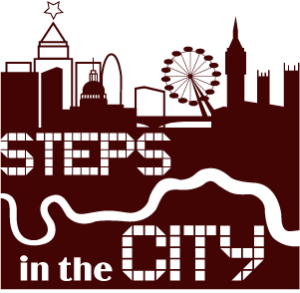Welcome to a new column for Future Lawyer!
Susan Doe, City of London tour guide, will be writing a regular column for us all about buildings with links to the law: Law and Mortar. Hope you enjoy…
 It may seem a bit odd to start a series of pieces about buildings relating to the law and the legal profession with a church. But Temple Church earns its place – not just by being the only building that is shared by the Inner and Middle Temples, but also by giving an insight into the ways buildings were used by lawyers in the days before formalised places of work.
It may seem a bit odd to start a series of pieces about buildings relating to the law and the legal profession with a church. But Temple Church earns its place – not just by being the only building that is shared by the Inner and Middle Temples, but also by giving an insight into the ways buildings were used by lawyers in the days before formalised places of work.
Why even are the ‘temples’ here? Their location relates to Fleet Street – the major route between the two London cities – the City of London and Westminster. The street is recorded as early as 1002 and was named after the River Fleet which crossed the east end of it and still runs beneath. In the 14th century the Inns of Court were established here because it was convenient for the lawyers who had to constantly move between ‘the City’ and Westminster, the merchant City and centre of trade, and the seat of government.
The Middle and Inner Temples operate as two separate precincts (and yes, there was an Outer temple originally, but it is long gone) but the one building they both use – shared since 1608 – is Temple Church (and for our purposes here we will ignore its recent fame as one of the major sites of The Da Vinci Code!)
The name Temple came from the Knights Templar – military monks, a group of nobles established in Jerusalem to protect pilgrims travelling to the Holy Land. They gained great power and influence – and riches. Including land here in 1160. Their wealth and influence induced envy in both Popes and monarchs and they were suppressed in 1312, and their land given to a much less threatening group – the Order of St John – the Knights Hospitaller (the origins of the current day St Johns Ambulance, but that is another story). They didn’t need the land at Temple and in 1346 they leased it to law students. The Inns were developed as hostels to house the lawyers, and so it all began. By the 1440s the land was divided into the three Inns – Inner, Outer and Middle (defined by their proximity to the City of London).
The Knights Hospitaller – like any other religious order – did not escape Henry VIII’s dissolution of the monasteries when he made himself head of the Church of England to escape the jurisdiction of the Pope. He claimed the property and gave the freehold in perpetuity to the ‘benchers’ in 1608.
The one real legacy of the royal connection is that Temple Church is one of the few ‘Royal Peculiars’ – it’s under the direct control of the monarch rather than the Bishop of London.
Being a lawyer was a fashionable pursuit in 16th and 17th century London, the sons of the nobility who weren’t the heirs usually went into the church or the law.

So – the church. Officially the Temple Church of St Mary, it was founded in the 12th century but there is evidence of a church on this site long before that. For architectural buffs, its interest lies in it being the finest example of what is known as the transitional period – between Norman and Gothic styles. It is one of only four round churches in the country. It survived the Great Fire of London but Sir Christopher Wren had a go at rebuilding it nonetheless, however, you won’t see much of his work today. It underwent huge restoration in the Victorian period and it was gutted by a bomb in 1941 during the Second World War. All the interior was destroyed.
The nave and the porch date from 1160-85, and the only Norman part remaining is the west doorway (not the door itself). The porch has been used in the past as a shop – Samuel Pepys mentions coming here in his diaries.
‘The Round’ was used by lawyers for meetings, especially in bad weather. People would come here to pay their rent and to negotiate contracts. Presumably stepping over the carvings of the 8 ‘knights recumbent’ that these days so interest the Da Vinci Code tourists. The shallow benches around the walls (check out the 64 gargoyles above) were used for resting weary limbs, but are apparently are also the origins of the phrase ‘the weak go to the wall’. You don’t have to imagine too hard about that if you were there negotiating a contract!
Today the Inner Temple use the south side of the aisle and the Middle Temple use the north side. Their crests are in the appropriate windows. Understandably, the church is a very popular place for barristers weddings and the christening of their offspring.
It is well worth looking at the sculpture outside created by Nicola Hicks – the grandly named ‘Monument for the Millennium’ shows two Knights Templar on the same horse (they supposedly did this to show their humility and vows of poverty) – it is now used to show the joint ownership of the church.
Susan Doe is Director of Information & Research for the European offices of Sidley Austin LLP, a US firm with headquarters in Chicago. Her remit is Library and Information services, know how and solicitor’s regulatory compliance.
A Law degree from the LSE and postgrad in Information Science has lead to 23 years in legal information, spanning 3 law firms.
Susan qualified as a City of London tour guide in 2008 and is about to inflict her knowledge of London on unsuspecting tourists during a stint as a ‘London Ambassador’ for the Olympics.
You can find out about her walks via Steps in the City.

